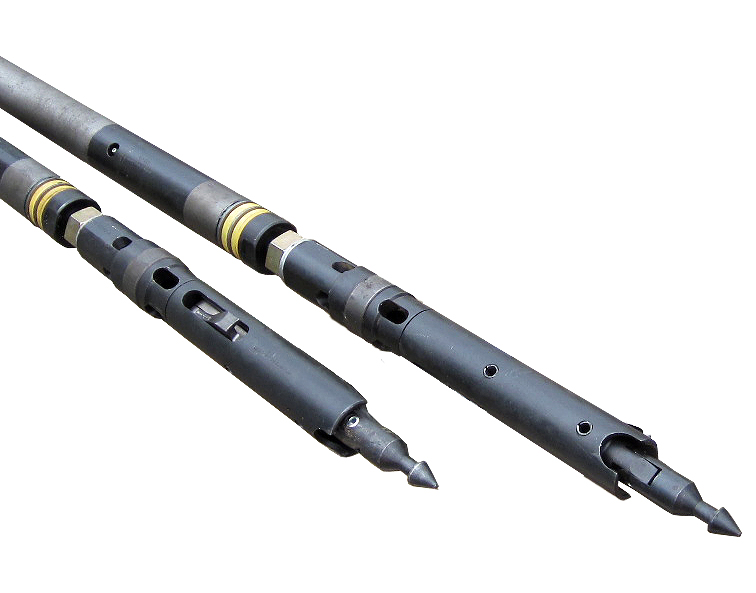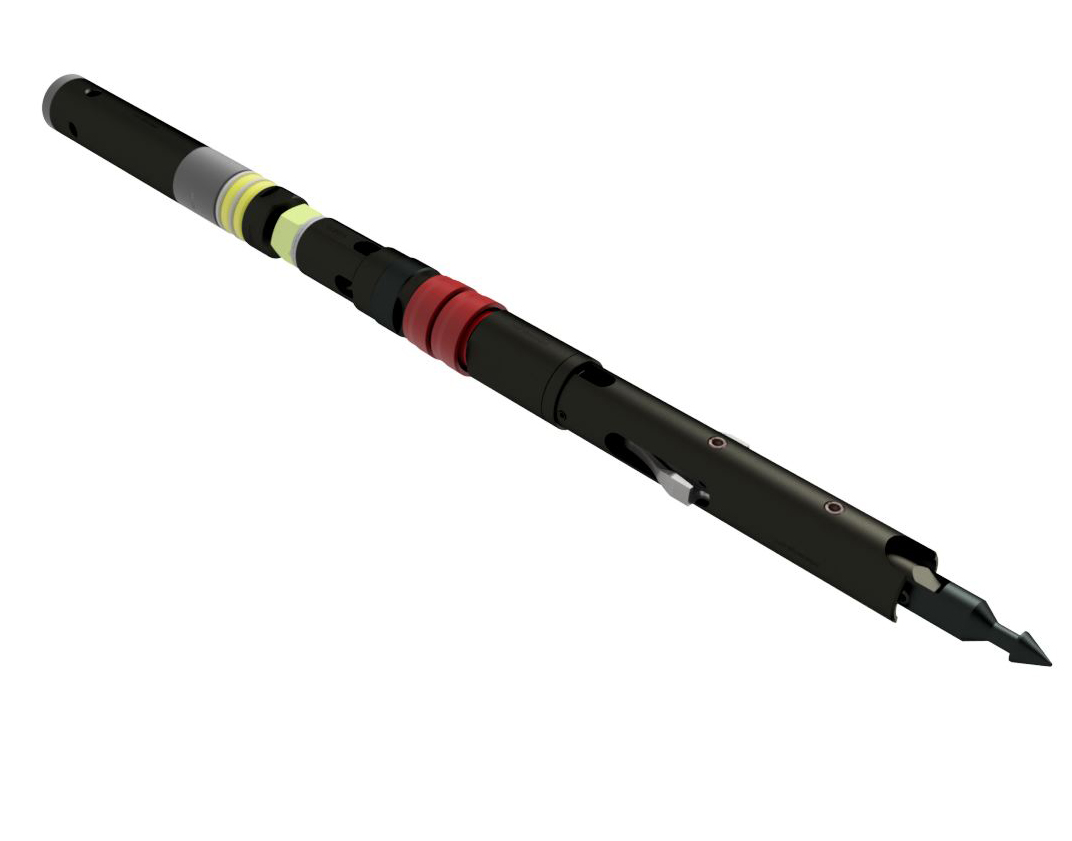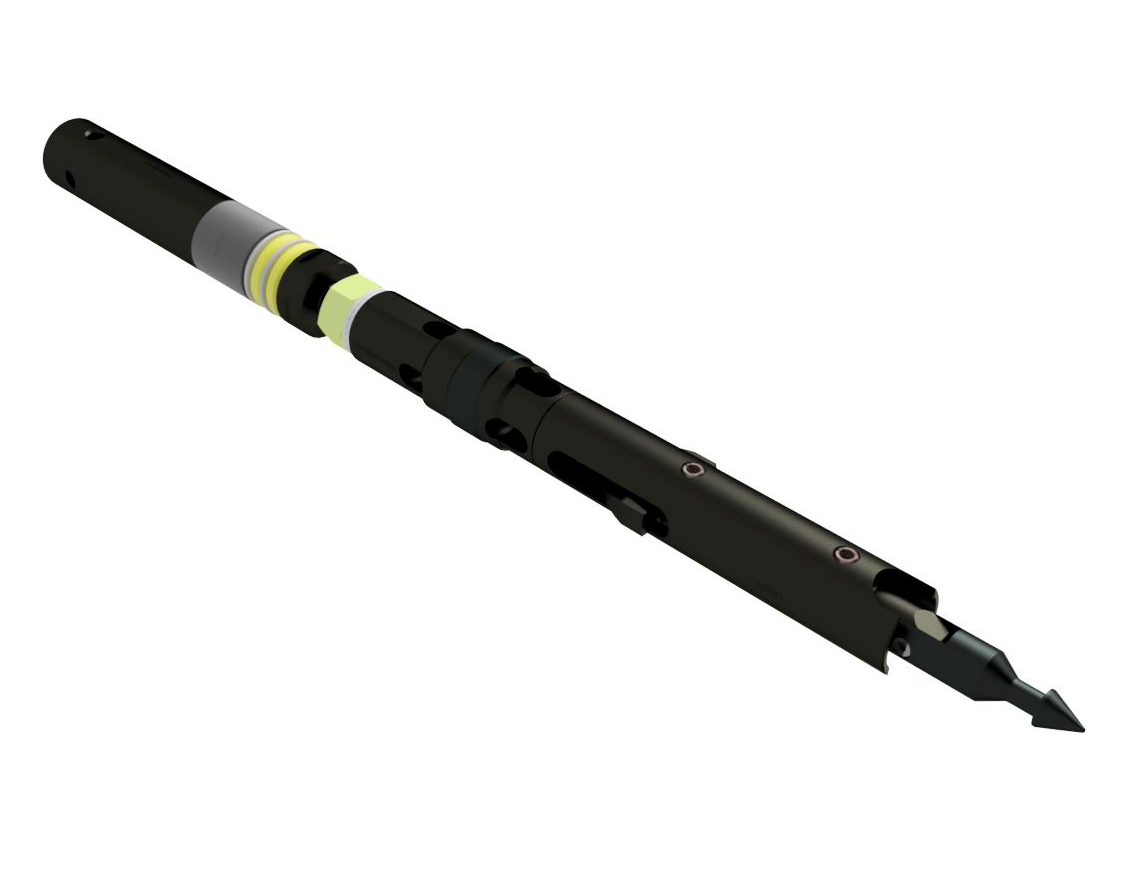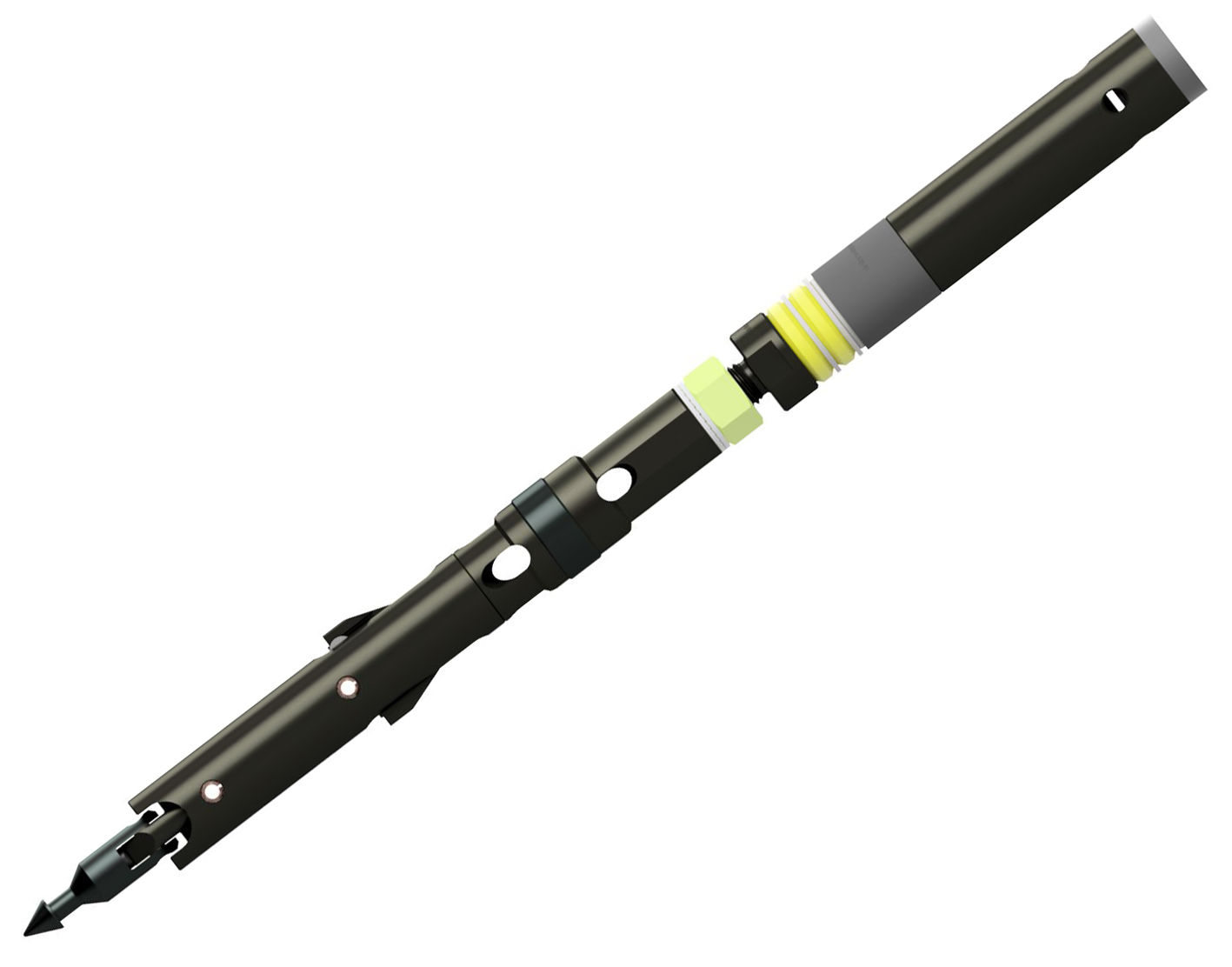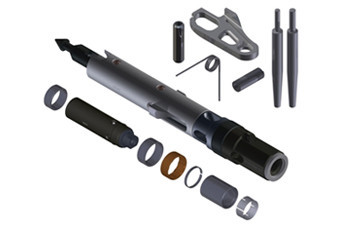They say that if your rig’s not turning, you’re not earning. Stuck tubes and mislatches cause significant downtime and can have a serious impact on your productivity. With Di‑Corp’s EdgeLATCH Core Barrel Assemblies, you can lock and release with confidence. We’ve taken the traditional Core Barrel Assembly and improved it with an innovative latching system that provides increased leverage for occasions when tubes are difficult to release.
Here are some additional features of our improved EdgeLATCH latching system:
- Provides a mechanical advantage during the “unlatching” or “unlocking” of the inner tube assembly.
- Maximizes the efficiency with which the latches are pulled inward.
- Transfers the pulling force of the latch retraction case from the pin through to the latches.
- Provides reliable, secure latching with both tanged and non-tanged locking couplings via an integrated latch spring that makes each latch move independently from the other.
- Prevents contamination for prolonged life of bearing and offers increased impact resistance on the bearing.
In addition to the unique EdgeLATCH mechanism, we’ve introduced other product enhancements to ensure you remain productive, including a shielded bearing and an inner tube cap thread protector.
Di-Corp’s EdgeLATCH Surface Core Barrel kits include standard sizes from B to P, and the Pump-In Core Barrel includes B to H. All Core Barrel Assemblies are supplied with the EdgeLATCH Head Assembly and Conventional Locking Couplings and are designed to be fully compatible with other popular industry core barrel latching systems.
For more information on the benefits and features of our EdgeLATCH, watch our YouTube video.
Latch Locking in Underground Pump-In Core Barrels
Di-Corp has developed a two-part enhanced mechanism that locks the latches open during uphole drilling and is designed to fit inside the existing space of most standard heads.
In the first mechanism, the locking pin slides into the notch on top of each latch when the latches open inside the adaptor coupling. The force of the locking spring keeps the locking pin in place until the latch retraction case is actuated during core retrieval. The second mechanism applies a designed spring force to the latch retraction case once the latches are opened. This ensures that the first mechanism remains fully engaged during drilling and that the latches are not prematurely retracted, resulting in the inner tube assembly unlatching.
EdgeLATCH product sheets
Surface | Underground
